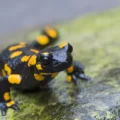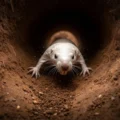The transition from meiotic divisions in the oocyte to embryonic mitoses is a critical step in animal development. Despite negligible changes to cell size and shape, following fertilization the small, barrel-shaped meiotic spindle is replaced by a large zygotic spindle that nucleates abundant astral microtubules at spindle poles. To probe underlying mechanisms, we applied a drug treatment approach using Ciona eggs and found that inhibition of casein kinase 2 (CK2) caused a shift from meiotic to mitotic-like spindle morphology with nucleation of robust astral microtubules, an effect reproduced in Xenopus egg cytoplasmic extracts. In both species, CK2 activity decreased at fertilization. Phosphoproteomic differences between Xenopus meiotic and mitotic extracts that also accompanied CK2 inhibition pointed to RanGTP-regulated factors as potential targets. Interfering with RanGTP-driven microtubule formation suppressed astral microtubule growth caused by CK2 inhibition. These data support a model in which CK2 activity attenuation at fertilization leads to activation of RanGTP-regulated microtubule effectors, inducing mitotic spindle morphology.








No Comments
Leave a comment Cancel